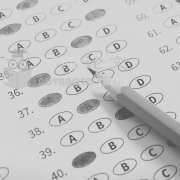英国论文代写:社交媒体不应该滥用
英国论文代写:社交媒体不应该滥用
这些罪犯黑邮件后问孩子们身体上满足他们,问他们的家庭住址。他们收到礼物的回报性的支持,这是最大的滥用这个世纪的社交网站。多数的滥用是由那些有精神疾病的人,想毁了别人的生活。网络欺凌的新学期是在当这些事故发生在个人的生活。这种欺凌也喜欢现实生活欺负,因为捕食者攻击个人的心理健康和稳定。恶霸使用在线聊天来添加其他个体,然后开始骚扰用户通过发送用户滥用图片和文件,可以干扰个人的私生活。受害者的脸取笑,贬义的评论和目标受害者的个性(瑞卡,2012)。
网络欺凌的增加是由于这些网络欺负怕了,不想在公共的运动场,因为欺凌。他们的假身份证头像或其他个人,在现实生活中并不存在。主要论点提出的许多人都在使用社交网站是关于父母对孩子的责任。社交网络不发达的目的,这些问题上升因为虐待行为的个人。父母需要检查孩子的活动。当个人支出额外的时间在互联网上他们应该上网和检查活动(森古普塔&乔杜里,2011)。
英国论文代写:社交媒体不应该滥用
These criminals ask the children to physically meet them after black mailing them and ask their home address. They receive gifts in return of sexual favours and this is the biggest abuse of the social networking sites of this century. Majority of the abuse is conducted by the individuals who are mentally ill and want to ruin the life of other person. The new term of cyber bullying is what comes in the life when these accidents happen with the individuals. This bullying is also like the real life bullying because the predator attacks on the mental health and stability of the individual. Bullies use the online chats to add other individuals and then start to harass the users by sending the users abusive images and files that can disturb the personal life of the individual. The victim faces teasing, derogatory statements and targets the personality of the victim (Rekha, 2012).
The increase of cyber bullying is because of the fact that these cyber bullies are scared and are do not want to caught in public in the play ground because of bullying. They take the fake IDs of avatars or other individuals that do not exist in real life. The major argument presented by many people over the use of social networking sites is about the responsibility of the parents towards their children. Social networking sites are not developed for abusive purposes, these issues rise because of the abusive acts of the individuals. Parents need to take a check on the activities of their children. When individuals are spending extra time on the internet they should surf the internet and check the activities (Sengupta & Chaudhuri, 2011).







